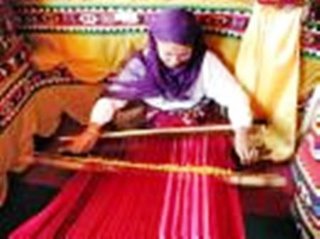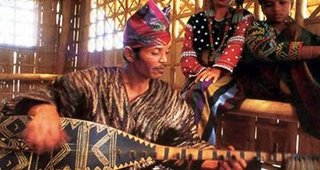Lanao del Sur
Overview
Lanao del Sur is the land of the Maranaos, “people of the lake,” among the most devout of Muslim tribes as well as the most artistic. Nowhere is this more evident than in the the people’s most natural way of life and the land’s most attractive sites.
The life of the Maranaos centers on Lake Lanao, the second largest and deepest in the Philippines and one of the most breathtakingly beautiful. The lake is surrounded with myths and legends.
The climate here is envigorating and fine grazing land stretches into the distance. A commanding view of the lake is offered by Marawi City, the provincial capital. The unique natural setting of the Maranaos is perhaps best manifested in Marawi Cty, by the presence of the many large torogans, the Maranao houses, which are characterized by an antique royal high roof with curved designs.
The city’s Aga Khan Museum, located within Mindanao State University, is a repository of Maranao and other Moro artifacts. It boasts a huge collection of indigenous art and cultural materials, ethnic music, the native tools and weapons used by the Muslims, and Muslim houses of different artistic designs.
Founded in 1962, the university draws the most crowds to the city. The Maranaos’ flair for the creative is exhibited by their numerous ceremonial artifacts and everyday tools trimmed with the sensuous "okir" (carving) and colorful "nagas" (serpent figures). Their long, low, and sleek boats sport a rainbow of brilliant colors matched only by the exuberance of the malong, the native wear of the Maranao women. Worn as a shirt or dress, used to cover the head or as a blanket, the highly decorated malong is violet, purple, green, red, yellow, floral, and geometric.
Geography
Lanao del Sur forms the western portion of Northern Mindanao. It is bounded on the north by Lanao del Norte, on the east by Bukidnon, on the west by Illana Bay, and on the south by Maguindanao and Cotabato. Rolling hills and valleys, a placid lake and river dominate the landscape.
Climate
The province has a cool and pleasant climate that falls dominantly under type F, which is distinguished by an even distribution of rainfall throughout the year. The Philippine summer is not quite distinct here. The wettest month is February and the dryest month is June. Lanao del Sur is outside of the typhoon belt
Language / Dialect
The Maranao dialect is the most commonly spoken. Also spoken are Tagalog and Visaya as well as English and Arabic.
Lanao Del Sur Is Famous For...
Aga Khan Museum
This repository of Maranao and other Moro artifacts boasts a huge collection of indigenous art and cultural materials, ethnic music, the native tools and weapons used by the Muslims, and houses of different artistic designs. It was named so in honor of King Aga Khan who contributed significantly to the realization of the museum. It is located within Mindanao State University, Marawi City.
Moncado Colony
It was named in honor of Hilario Camino Moncado, a native Filipino, a leader, an organizer, an author of books, and a lecturer on the humanities. He graduated with honors at the age of nine from the India College of Mystery and Psychics. Moncado monuments as well as monuments of wild animals can be found on the site. It is located in Moncado, Cadingilan.
Torogans & Sambitory Old Building
The unique natural setting of the Maranaos in Marawi City is best manifested by the presence of the many large torogans, the Maranao houses, characterized by an antique royal high roof with curved designs. The torogans are found in Amito, Dayawan, Marawi City, Sambitory Building, Barrio Naga, Marawi City.
Lake Lanao
Lake Lanao is the second largest and deepest in the Philippines, at 2,300 feet above sea level. Marawi City, the provincial capital, lies in a rolling terrain commanding a majestic view of the fascinating Lake Lanao.
Bagang Beach
The beach is filled with rocks and boulders that serve as benches, and trees in the lakeside that provide shade. It is ideal for picnics, and its clear water makes it a good place for boating and swimming. Bagang Beach is located in Caloocan, Marawi City, two meters away from the commercial site of the city.
Agus River
Agus River is said to be the swiftest running in the country. Its famous cataract is the Maria Cristina Falls, an outlet of Lake Lanao to Illana Bay. It is located in between Saduc and Lilod, Marawi City.
Kilometer Zero Point Marker
It is an important landmark in Lanao del Sur, from which all distances in Mindanao are measured. This is similar to the measures of distances in Manila, which begin at the Rizal Monument in Rizal Park.
Mindanao State University (MSU)
Marawi City draws the most number of visitors within Lanao del Sur due in most part to MSU. Founded in 1962, it serves as an educational institute and a center of social and cultural integration.
Dasalan Handicraft Building
It houses Maranao art-in-execution. Expert carvers and weavers offer live demonstrations here, displaying their impressive craft and skills.
Tugaya Town
It has a near-exclusive reputation for producing brassware, being the only community in the province that produces excellent brassware. Practically every family has a bellows in the area where the metals are smelted. Using the cire perdule or lost wax technique, cannons and gongs, betelnut boxes and rice pots are made. (wowphilippines)


